CHRISTOPHER WARD
ITS TIME IS NOW
The 20-year overnight success story of Britain’s biggest watch brand
CHRISTOPHER WARD OFFERS A WATCH FOR EVERY OCCASION.

CHRISTOPHER WARD OFFERS A WATCH FOR EVERY OCCASION.
On a sunny summer afternoon, Esquire takes the train from London to Maidenhead, strolls down the high street, turns right at Wenzel’s the Bakers, passes the Santander and the HSBC, and knocks on the door of a former solicitors’ office, which now houses one of the UK’s biggest horological success stories.
It’s the building that British watchmaking brand Christopher Ward calls home, and is simultaneously the company’s order-processing centre, customer-service hub, repairs workshop, quality-control department and head office, as well as its one and only showroom.
The entire building is packed to near-capacity, a hive (and, with its maze of rooms, it is slightly hive-like) of British industry, buzzing with the gentle chatter of a company’s worth of dedicated, focused teams in different rooms, all pulling together, genially and confidently, to make something they clearly care about and believe in.
Due to the lack of a physical presence in stores, Christopher Ward has an unusually customer-friendly returns policy; watches are sent, free, anywhere in the world, and can be tested for 60 days before returning, with a 60-month guarantee on the movements.
On the ground floor, in a room off to the left, a cheerful woman named Heather Fuller looks after the returns. “People send back their watches in all sorts,” she says. “Strangest thing I’ve had? A tin of beans, I think.”
The origin story of Christopher Ward — and its founding ethos — is part and parcel of the company legend. It wasn’t that its founders had nothing to lose — it was that they’d already made everything they needed (and then some) elsewhere. Mike France started out as a trainee manager in the Swindon branch of Littlewoods in the mid-1970s (2024 marks his 50th year in the retail industry). He ascended swiftly, becoming a buyer, moving to BHS and eventually joining the Sears Group, which owned brands including Selfridges. Here he met Peter Ellis and the pair became business partners, going on to run, buy and finally sell beloved high-street toyshop the Early Learning Centre for a sum that ensured they wouldn’t need to work again. France tolerated retirement for approximately a month before seeking a new challenge, in May 2004.
Together with their friend Chris Ward, who, in France’s words, was “bored with importing T-shirts”, they decided to start a business together, settling on watches due to a shared interest in horology, and naming the business after Chris who, of the three men, was deemed to have the most typically English-sounding name. They first set up shop in a chicken shed.
GETTING HANDS ON WITH THE RANGE
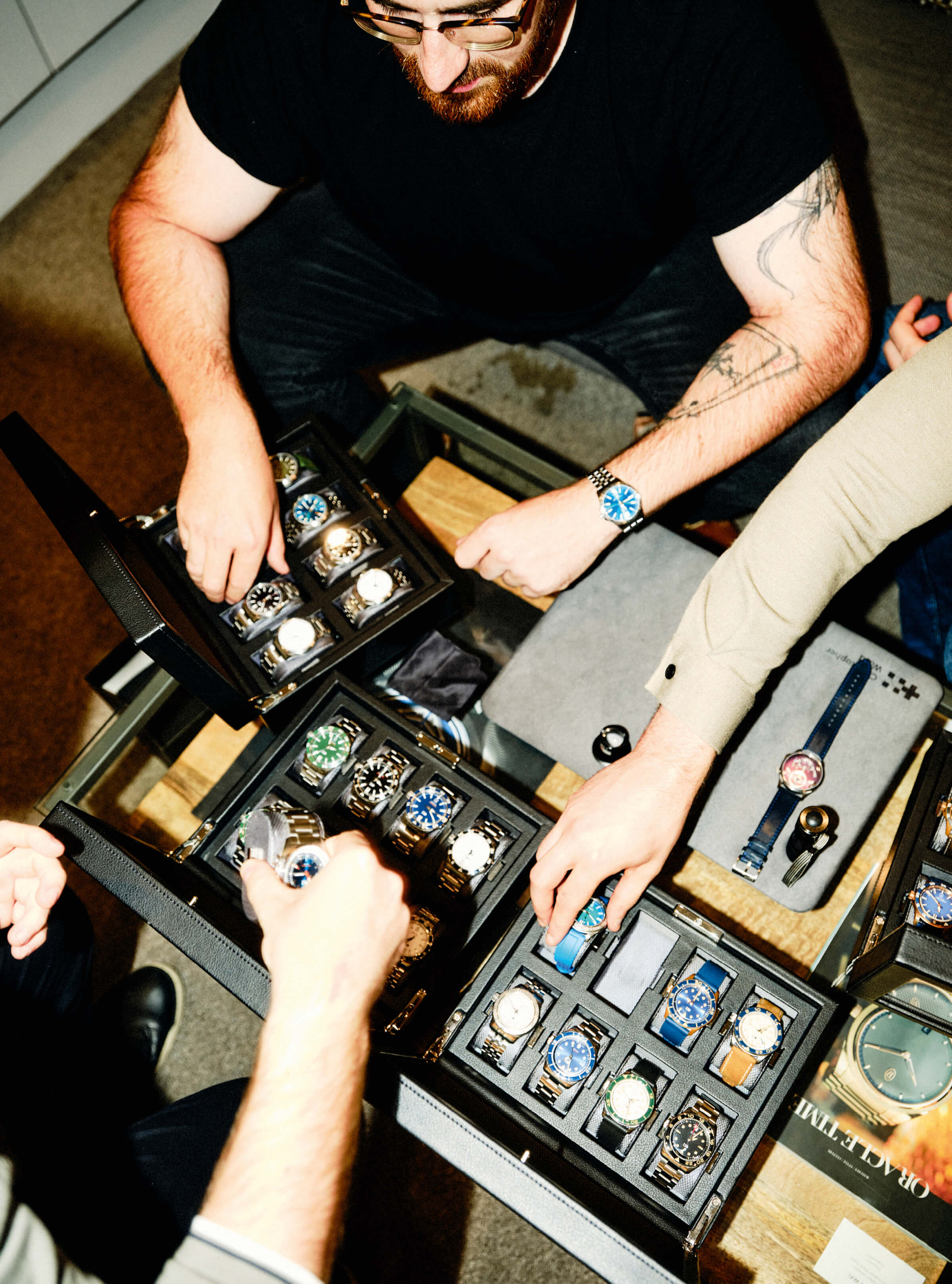
GETTING HANDS ON WITH THE RANGE
From the off, the company’s great defining characteristic was its 3:1 profit ratio — a margin France held sacrosanct from his days in traditional retail, but one that was unheard of in the world of timepieces. In the traditional watch industry, by contrast, due to a combination of overheads (physical stores and their attendant costs), inefficiency (agents and middlemen) and plain greed, other brands were known to pursue profit multipliers of x8, x16 or even x32.
France was horrified, and the trio agreed they would strictly adhere to their 3:1 model — and achieve it via what was, at the time, a unique proposition: no shops at all, direct sales only, via the internet. In 2004, before the days of Mr Porter and Hodinkee, with Facebook in its infancy and none of its successors yet spawned, this was a maverick choice. But the guys stuck to their guns and released their early watches to a fairly muted response. “Then a man named Dave Malone in Tasmania bought a watch,” France says over Zoom. “It was a C5 Malvern Automatic. And he was going to expose us as the charlatans we clearly were, because no one could possibly produce a watch with this componentry at that price.”
Unbeknown to France, Malone was a big contributor to TimeZone.com, which, in that pre-social media, pre-Reddit age, was the world’s largest watch forum. Malone’s order arrived, and he duly inspected it forensically. “He was going to expose us,” France says, “but instead he wrote a eulogy, pronouncing it the best-value mechanical watch the world had ever known.” And that’s how it all began.
A BOX OF SPARE WATCH PARTS
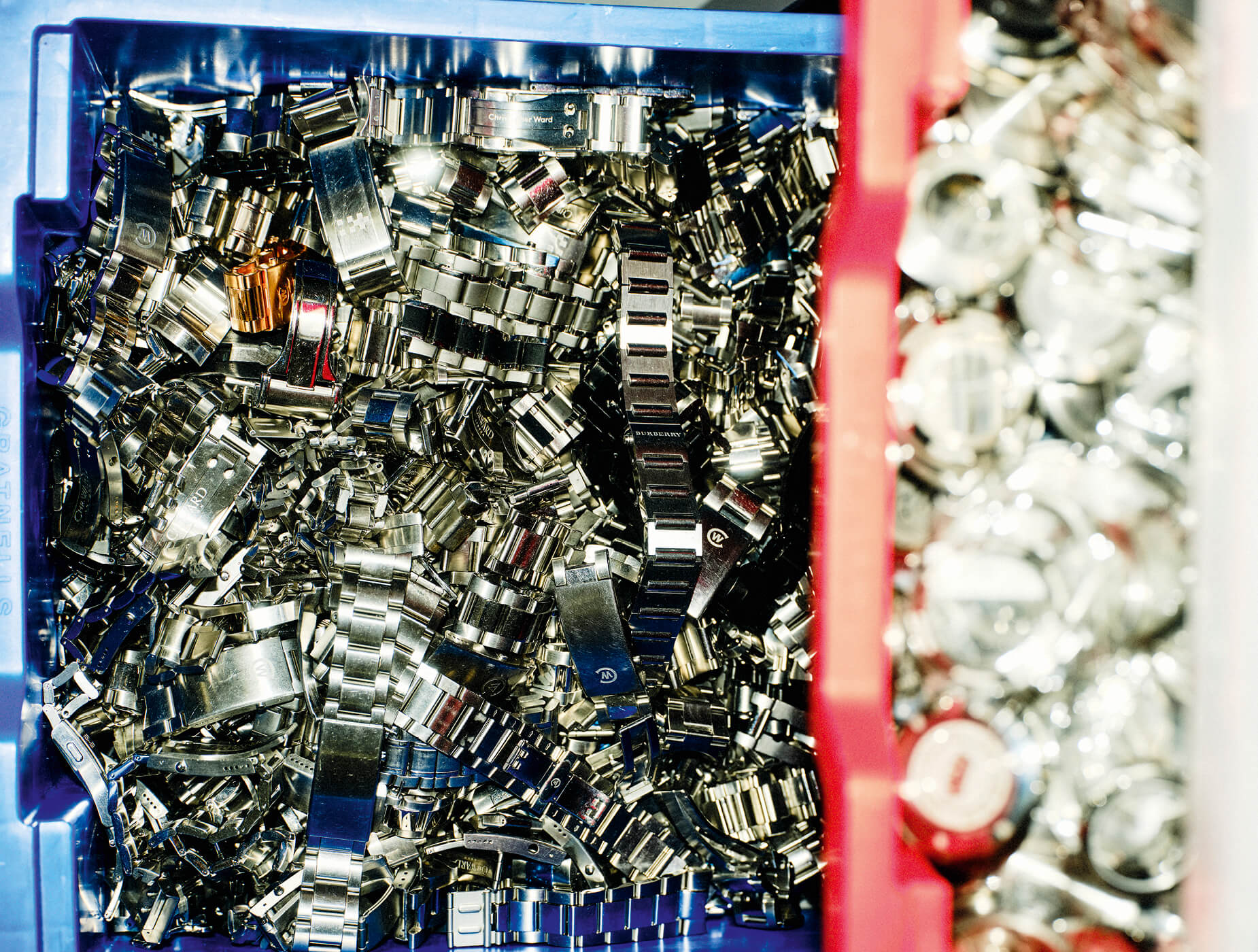
A BOX OF SPARE WATCH PARTS
Christopher Ward started to find its audience. It honed output by strengthening ties with the Swiss companies it worked with, in 2008 striking up a relationship with Synergies Horlogères, an acclaimed Biel-based private-label company making watch movements for other brands, led by industry veteran Jörg Bader. And before long, the company had outgrown the chicken shed. In 2010 they moved into their solicitors’ office home. In 2014, Synergies Horlogères formally merged with Christopher Ward to become the Swiss arm of the company.
“We read the forum every day,” France says, “particularly the negative comments. It’s like an early-warning system.” France is extolling the virtues of the unusually close relationship the brand has with its customers, something he’s understood since that trajectory-changing TimeZone.com post. The Christopher Ward forum was set up by enthusiasts and is run independently, but France and the team monitor it religiously — even going so far as to have annual meetings with the moderators. “These people love the brand, but they’re not slow in having a pop at us if we’re doing something wrong, which is brilliant — because these are people who genuinely care about you, telling you that you’re screwing up if you’re screwing up.”
“He was going to expose us as charlatans. Instead, he wrote a eulogy pronouncing it the best-value mechanical watch in the world”
France gives great Christopher Ward: he’s a chatty, canny communicator (“What led me to watches? Boredom, really”). He’s an engaging frontman for the operation, as well as — so his team report over lunch — a driven and details-orientated leader. He obviously cares about the watch industry deeply, and he chats excitedly about his recent initiative, the Alliance of British Watch and Clock Makers, which he set up with the aim of promoting the UK watch industry at home and abroad, encouraging people to join and help grow it to a £1bn industry by 2030. (It’s a project he set up with Roger Smith, the revered watchmaker deemed an artisan nonpareil by peers who is currently involved in a pioneering project with Manchester Metropolitan University researching the use of nanotechnology coatings in watch parts to replace oil.)
CO-FOUNDERS MIKE FRANCE AND PETER ELLIS OUTSIDE THEIR MAIDENHEAD HQ, BASED IN A FORMER SOLICITORS’ OFFICE
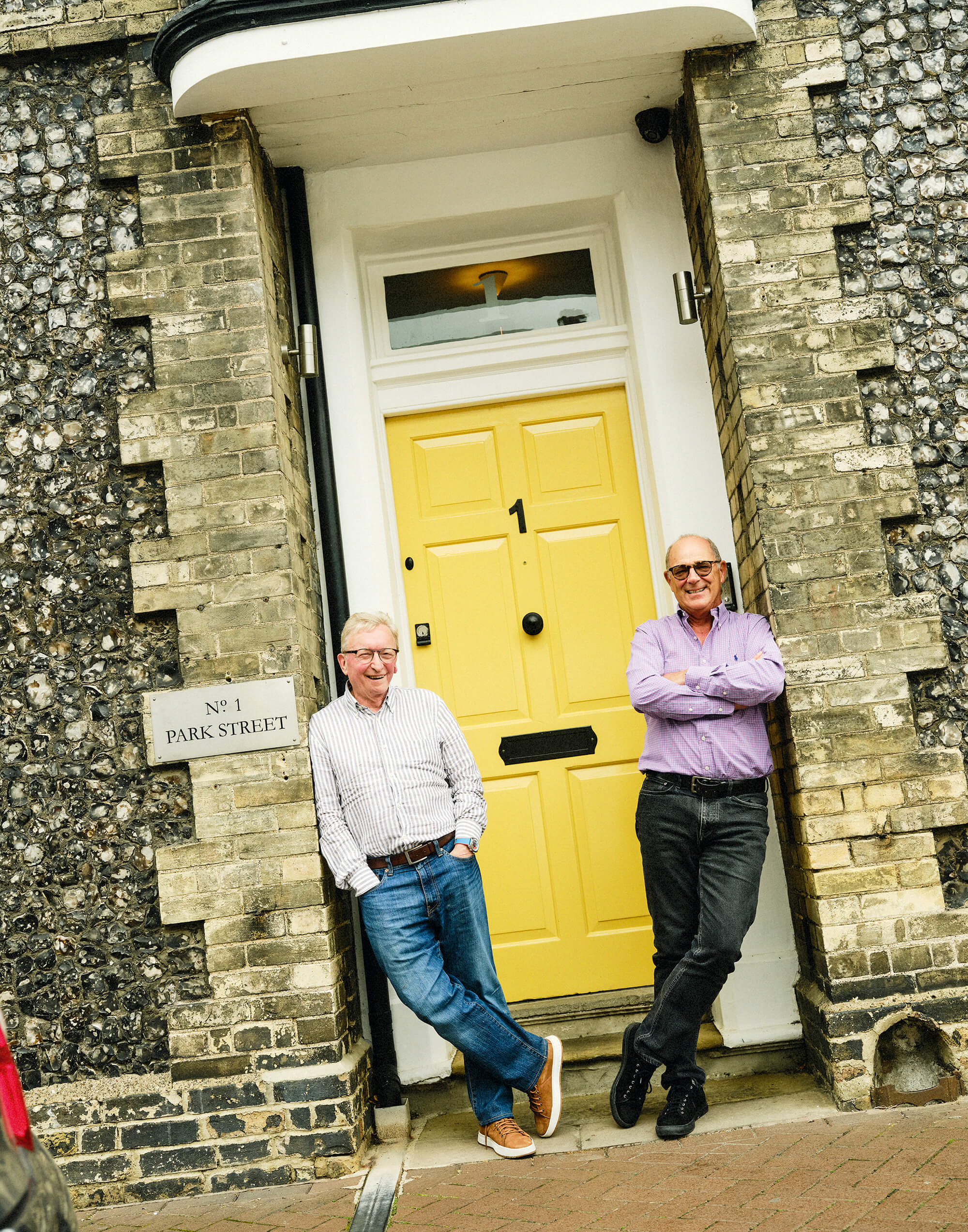
CO-FOUNDERS MIKE FRANCE AND PETER ELLIS OUTSIDE THEIR MAIDENHEAD HQ, BASED IN A FORMER SOLICITORS’ OFFICE
There’s a relaxed confidence to France, a sort of lightly worn expertise and unaffected enthusiasm that also permeates the company’s DNA — perhaps it’s one of the reasons this one-time scrappy outsider has survived 20 years in business, becoming an industry leader with a UK-based nerve centre that boasts world-class horological talent.
Upstairs in the solicitors’ office, in a room of medical-grade sterility known as The Clinic, a pair of slowly-rotating machines that resemble a fairground big wheel on steroids are gently spinning 25 Christopher Ward watches.
“The average service takes two to three hours, as well as a 40-minute clean. Then it’s tested for a week [for accuracy] using the Cyclomotion,” says the workshop manager, Andrew Law, who oversees the service and repairs process alongside nine young watch technicians and watchmakers. Law and his team carefully inspect and fix each timepiece that comes in with the aid of a steady gaze, loupe eyeglass magnifiers and a series of small, pink, inescapably prophylactic rubber coverings on the tips of their fingers. They work closely with their Swiss counterparts — one UK watchmaker, Toby Lewis, was even “poached” from Maidenhead and now works in the Biel atelier (“You’ll meet Toby when you’re out there,” says Law. “Test him on his French — he’s a proper Essex boy”).
The diligent repairs process, along with its comparatively generous pricing structure (“Other brands would say, ‘Your watch is this age, it needs a new mainplate, which we’ll charge you extra for,’” says Law. “We just charge a flat rate”), is part and parcel of Christopher Ward’s customer-friendly approach — going the extra mile in their service to make up for the lack of shops. It’s also imperative as the watches they produce become increasingly complex.
A SELECTION OF BOOKS ON THE ESSENTIAL READING LIST
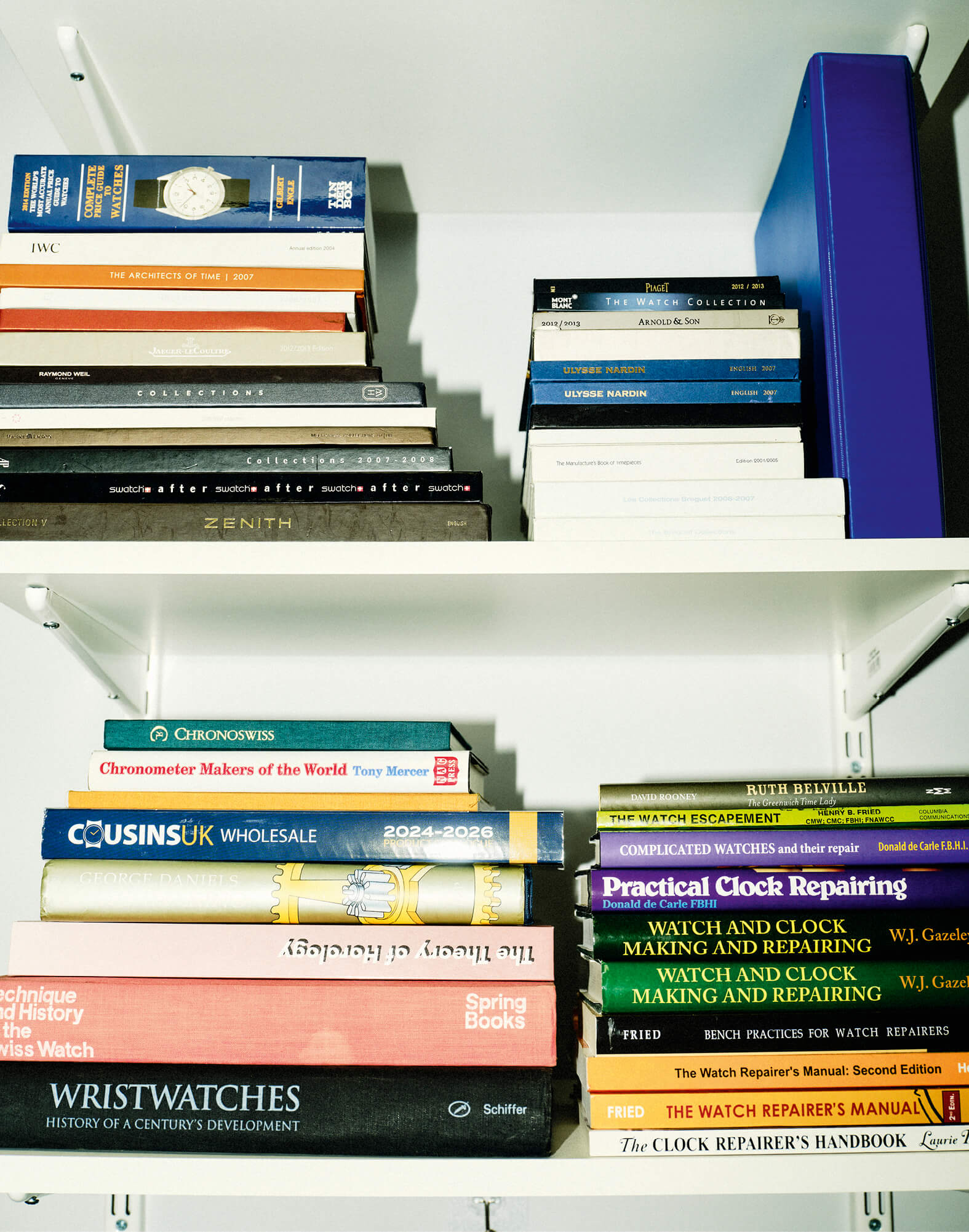
A SELECTION OF BOOKS ON THE ESSENTIAL READING LIST
Christopher Ward has always been a technically ambitious company. The relationship with Synergies Horlogères placed the brand in the orbit of the Swiss company’s master watchmaker, Johannes Jahnke, who set about creating a series of calibres for Christopher Ward that would radically elevate its horological game, giving the brand a jumping hour (the JJ01, in 2011), single-pusher chronograph (the JJ02, in 2012), world timer (the JJ03, in 2013) and moon-phase (the JJ04, in 2015). Most significantly, Jahnke also designed Christopher Ward’s very own in-house mechanical watch movement, the SH21, which was launched at the same time the merger was announced. It is the first commercially viable mechanical movement from a British watch company in half a century.
As the team consolidated their technical prowess, they also made some savvy business decisions — they had a good pandemic, for example. “I remember saying to Peter, ‘No, we can’t let this brand go dark,’” says France. “So we decided to make a TV ad.” They’d never made one before, but it was another of France’s educated gambles. “At that time, the cost of putting a TV ad on had just fallen by 40 to 50 percent, and yet there were 40 or 50 percent more people watching TV.” It paid off. “We gained market share during Covid like you wouldn’t believe!”
But the company’s biggest breakthrough came in 2022, with the arrival of a beautiful and audacious watch that chimes on the hour: the Bel Canto. It was the product of years of Anglo-Swiss coordination, released to a rapturous reception and won the Petite Aiguille award at last year’s Grand Prix d’Horlogerie de Genève — a recognition of both the Bel Canto’s technical accomplishment and, at £3,195, its remarkable value.
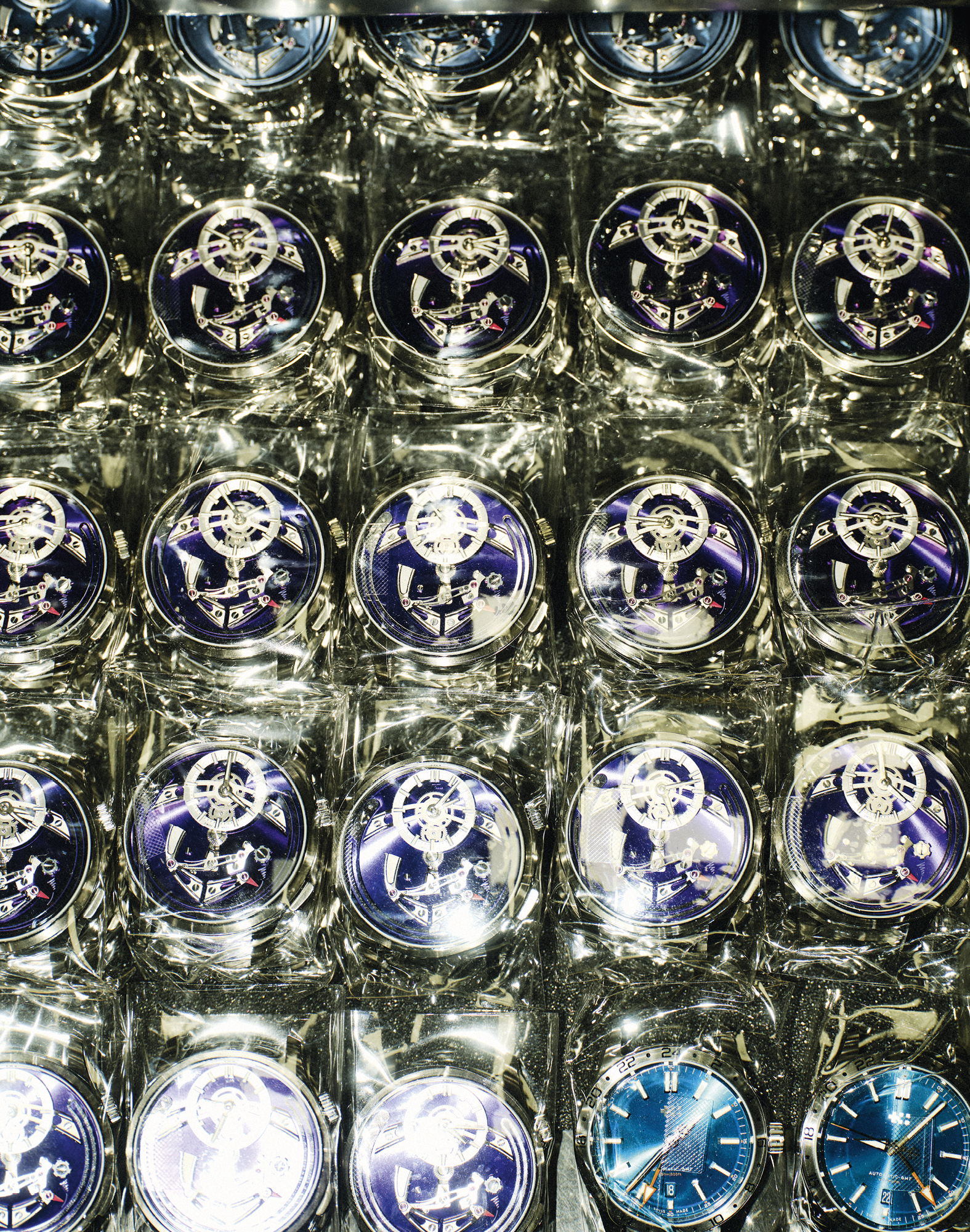
“If you look at the texture on the dial, you can see how important the play of the light is.” Senior designer Will Brackfield, a calm and measured presence in a black tee, is taking Esquire through the Christopher Ward range up close in the showroom (including a beautiful new addition to the Bel Canto family that is yet to be released). “What I’ve really tried to do from when I started is to make it all feel more cohesive,” he says. “So most of the hands now have a similar design — those triangles — but with different variations. On a C60 Trident Pro 300, they’re very sharp and angular because it’s a tool watch. On the other hand, the C65 Aquitaine is more vintage inspired so everything’s a bit more rounded off, but the DNA is there. I think that’s what great brands do — you instantly recognise them from certain elements.”
A long-time watch enthusiast, Brackfield found himself designing aeroplane interiors and fire suppression systems before finally securing a position at Christopher Ward in 2019. His predecessor, a Swiss-watch savant named Adrian Buchmann, is still officially the brand’s head of product design, but has been working in a consultant capacity since 2020. He and Brackfield speak every day.
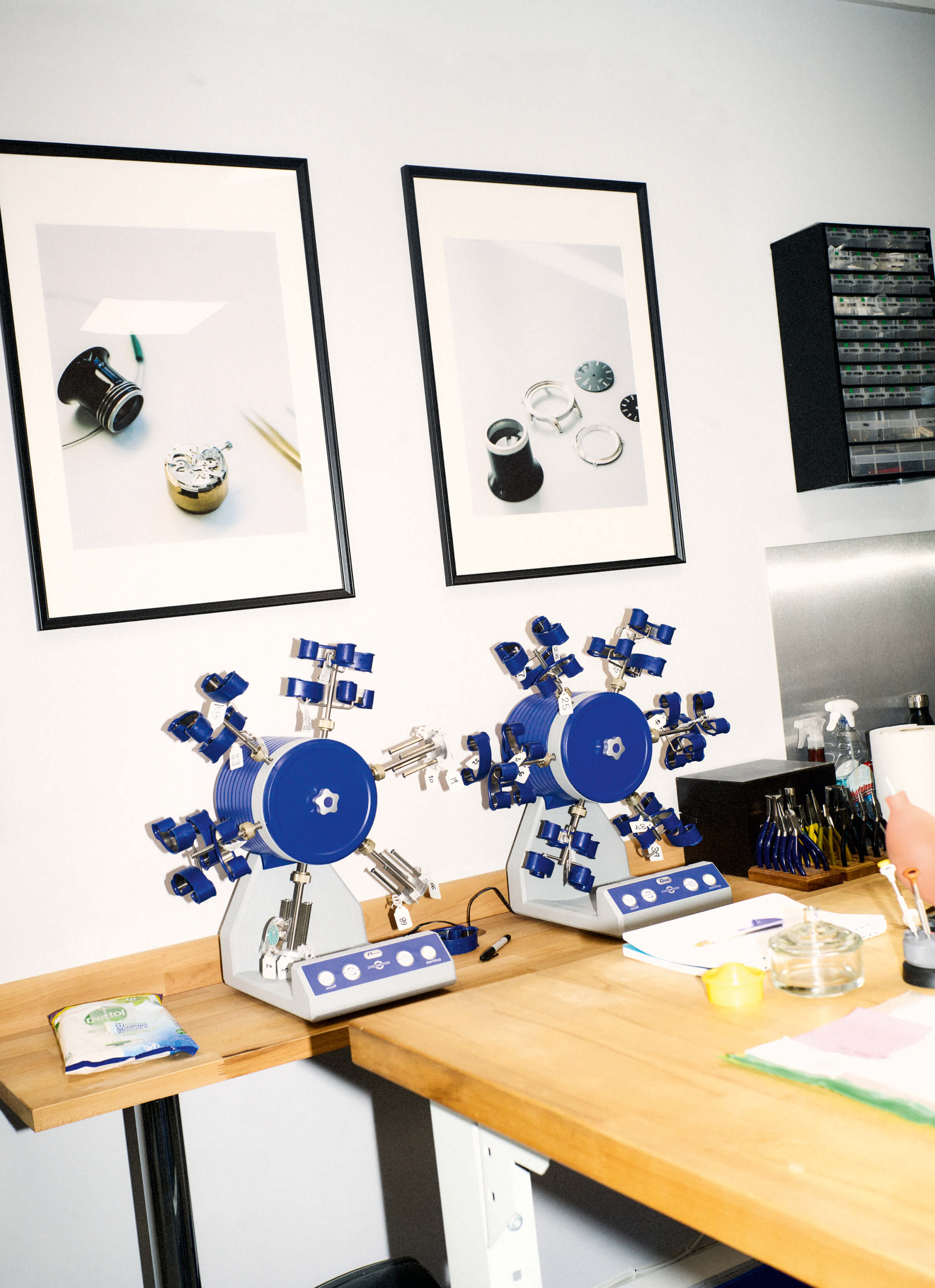
Brackfield oversees the company’s prolific output (37 product launches in 2023 — and a remarkable 47 in 2022), with now distinctive lines including the Sealander, the Twelve and Twelve X, the C1 Moonphase and, of course, the Bel Canto.
From quality packaging — that satisfying vacuumed slide of a well-made box opening that bespeaks a high-quality product within — to sharp, wry advertising; well-honed copy in Loupe magazine, published quarterly; and the simple, elegant, twin-flag logo, this feels like a company that knows what it’s doing.
In spring 2025, Christopher Ward’s range will grow yet again, as it releases what it suspects will be the next ‘Bel Canto moment’: a brand-new design that Esquire has seen, but is currently wreathed in secrecy. Elegant and balanced, it will open up an entirely new genre of timepiece to the Christopher Ward customer (watch sleuths, read into that what you will). As the designs are finalised and the launch looms into view, Brackfield has been in constant contact with both France and the team in Switzerland. “It’s a real collaboration,” he says.
BEHIND THE CURTAIN: A LOOK INSIDE THE CHRISTOPHER WARD WORKSHOP, WHERE WATCH REPAIRS AND SERVICES ARE CARRIED OUT TO EXACTING LEVELS OF ACCURACY AND DETAIL
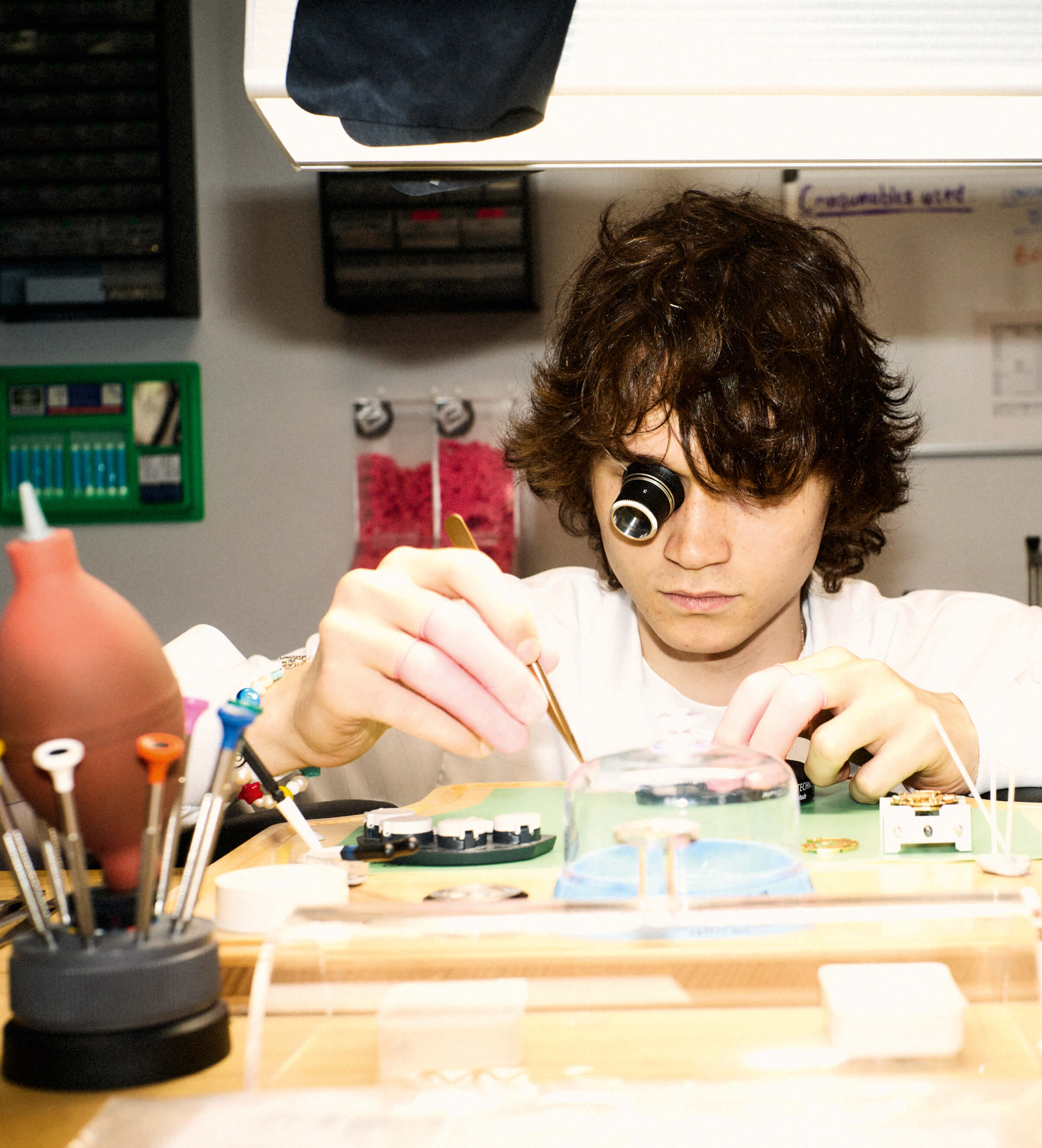
BEHIND THE CURTAIN: A LOOK INSIDE THE CHRISTOPHER WARD WORKSHOP, WHERE WATCH REPAIRS AND SERVICES ARE CARRIED OUT TO EXACTING LEVELS OF ACCURACY AND DETAIL
In order to reach Christopher Ward’s atelier in Biel, you must first pass the vast Omega building (with an exact replica of the Apollo Lunar Module outside) and the undulating, alien, glass-and-timber structure next door that houses Swatch (with its implausible “drive-through” watch kiosk outside). Christopher Ward HQ, a few minutes’ stroll away, is a converted house in a leafy residential district; there’s a ramshackle adventure playground nearby and parents ferry their children to and fro on cargo bikes.
As in the UK, the building is humming with people getting on with the business of horology. Downstairs is another spotless workshop, home to yet more watchmakers (including Essex boy Toby Lewis, chatting away breezily in the back as he works on a Bel Canto — Esquire can report that he doesn’t appear to have learned French). And in the open-plan central office, people are busy but not stressed. It’s not the mania of a start-up, nor the slightly torpid energy of a corporation — it’s a bustling company on the make.
Upstairs, the company’s voluble technical director, Frank Stelzer — the man who made the Bel Canto sing — sits in a small office in front of a screen filled with detailed 3D renderings. The Bel Canto concept came to Stelzer in a moment of inspiration, when he realised the principle behind the existing jumping hour movement could also be used to create a complication that chimes (obvious really, when you think about it).

Stelzer is, in Brackfield’s words, “exactly as you’d imagine a Swiss-German watchmaker to be”. When he’s not working at the atelier, Stelzer can be found at his personal home atelier — in which the very first Bel Canto prototype was created. “So you see, it’s not just over at 5pm,” says Stelzer. “The work keeps going.” (One can’t imagine that Stelzer ever really stops working; even after he’s clocked off, he’ll still be clocking.)
Downstairs sits Jörg Bader’s son, also called Jörg Bader (he doesn’t go by “Jr”, but his dad does go by “Sr”), the product director who leads the Swiss arm of Christopher Ward. Bader finishes an animated phone call (“I just had an idea: a decompression scale on the Aquitaines…”) and strolls over to talk.
Esquire has interviewed Swiss-watch executives before — it’s a process that generally requires levels of high-wire negotiation more common to international diplomacy, with questions ideally screened weeks in advance so publicists can attempt to prune away anything even faintly interesting. Jörg Bader, however, turns out to be the most relaxed man in Switzerland, and reclines in a chair in an entirely PR-free office, launching into answers with the kind of unvarnished honesty that would likely make a PR from [insert established Swiss-watch brand here] hurl themselves from the nearest window.
INSIDE CHRISTOPHER WARD’S SHOWROOM
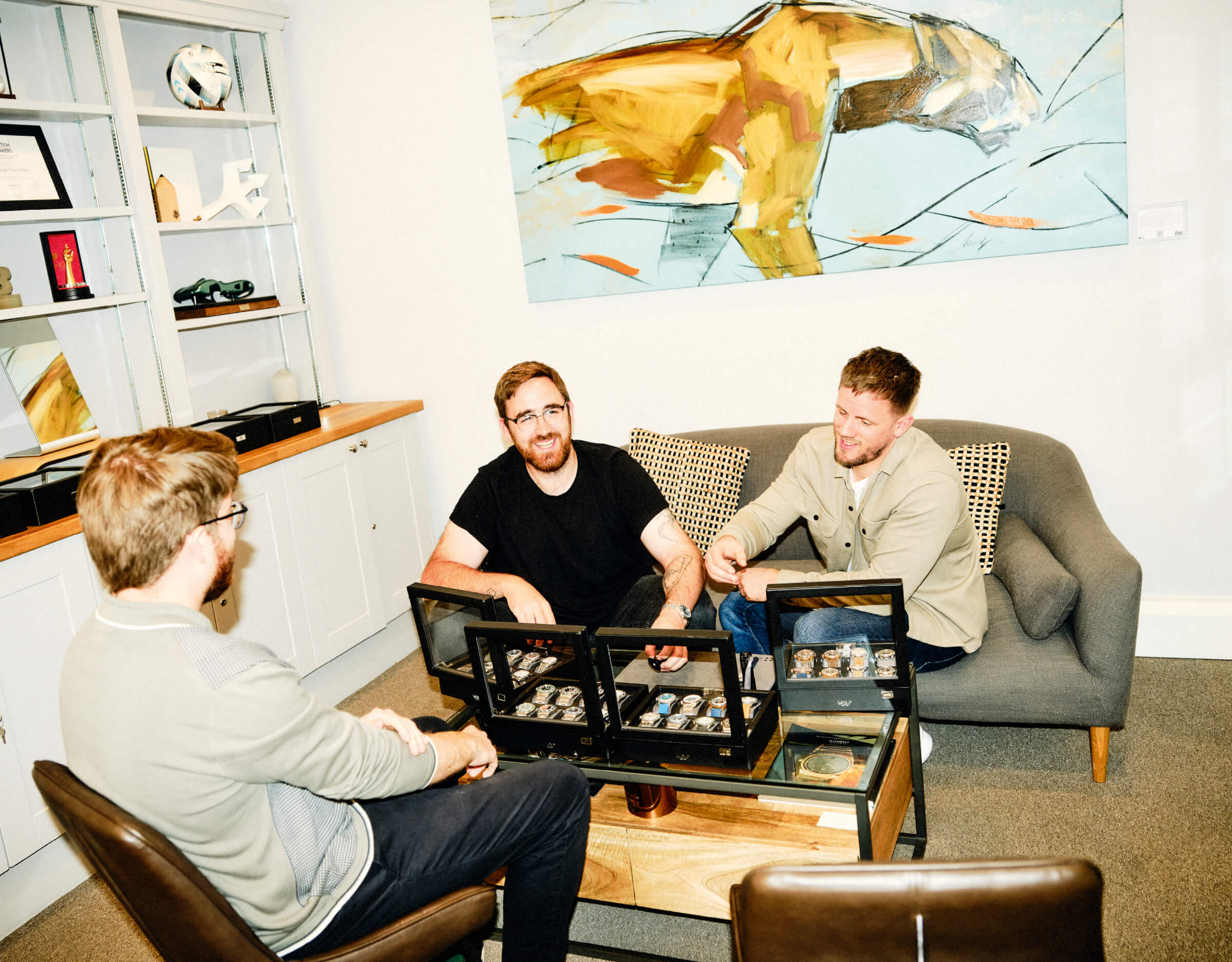
INSIDE CHRISTOPHER WARD’S SHOWROOM
“If you’re part of the Swatch Group, you can’t move from your price bracket or you’ll piss on the shoes of the other brands,” says Bader. “People are stuck in political madness.” He relishes the autonomy Christopher Ward has to set prices compared with their competitors — but is also wary. “Yes, we have a bit of headroom, but I think there’s a certain limit because then you lose what you’ve built, what you stand for. It’s what Tag Heuer did in the early 2010s, or Zenith — they all moved up in price and they lost their core base. It’s a dangerous move. With it comes a bit of greed.” Bader is conscious of keeping a rein on Christopher Ward’s ever-expanding product line and is working with France and co to ensure the brand stays true to its DNA.
Just as a watch is a careful union of innumerable parts (or, as Stelzer demonstrates, carefully enumerated parts), the creation of any new watch design is the careful union of myriad creatives, engineers and executives. It also needs some serious industrial heft — which is where Paoluzzo comes in.
IMPORTANT NOTICES ONLY
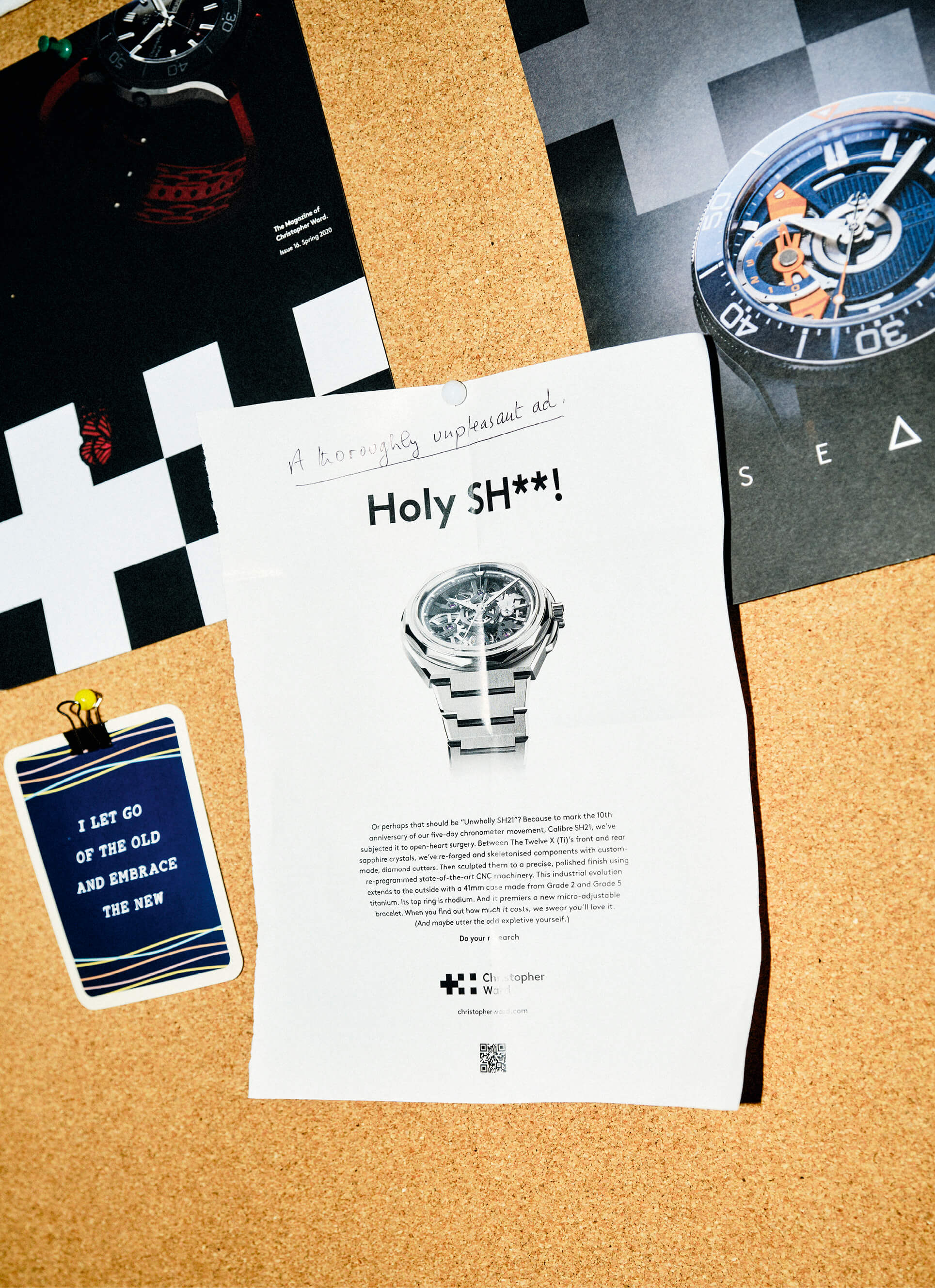
IMPORTANT NOTICES ONLY
There’s nothing ramshackle or folksy about the Paoluzzo factory on the outskirts of Biel, where Christopher Ward’s Twelve and Bel Canto watches are milled. It’s a large, loud building that houses the machines that make watch parts — and the machines that make the machines that make watch parts. Components are honed in spluttering vats of smoking green oil and measurements of microns have vast implications. It’s a serious place, but it’s run with panache by gregarious, laid-back CEO Philipp Staub. “We’re all masters of disaster here,” he booms, striding past his engineers.
Staub, a former jazz and blues pianist of remarkable vitality, now rises at 5am to exercise for an hour before going to run his three ventures (there’s a software company and a consultancy in addition to Paoluzzo). He also sponsors a hospitality lounge at an ice-hockey rink, where he somehow manages to entertain a selection of clients and friends until midnight twice a week. Visitors to Paoluzzo are treated to beer and cigars in a steampunk-esque bar with a cowskin rug.
EVERY ROOM IN THE FORMER SOLICITORS’ OFFICE HAS BEEN PUT TO GOOD USE

EVERY ROOM IN THE FORMER SOLICITORS’ OFFICE HAS BEEN PUT TO GOOD USE
Paoluzzo’s engineers not only each run a machine, they also design the computer programme that it runs on. A sensible system — though it’s hard to find people who are up to the job. “So the best way is, let them work here for four years. They should make their whole school here — and then we try to keep them. That’s why I give them every day a little bit of cocaine so they stay,” jokes Staub. (Side note: Esquire once had to wrangle for weeks with [Swiss-watch company redacted] to publish the headline-grabbing fact that one of the brand’s senior executives “enjoyed travel”.)
It hasn’t all been smooth sailing, though. Early designs were criticised in some quarters for being derivative of other pieces on the market. (“Yeah, 100 percent agree,” says Bader, instantly, when this is mentioned. “Back in the day they were very commercially driven — it was really only about value proposition. Price was the most important aspect of the product, but today it’s quality and then price.”) To begin with, the merger didn’t have the desired effect, either. “We thought that we’d ‘pop’ in 2014,” says Bader, “but we didn’t. Really, it took the Bel Canto.”
A TECHNICIAN GETS TO WORK
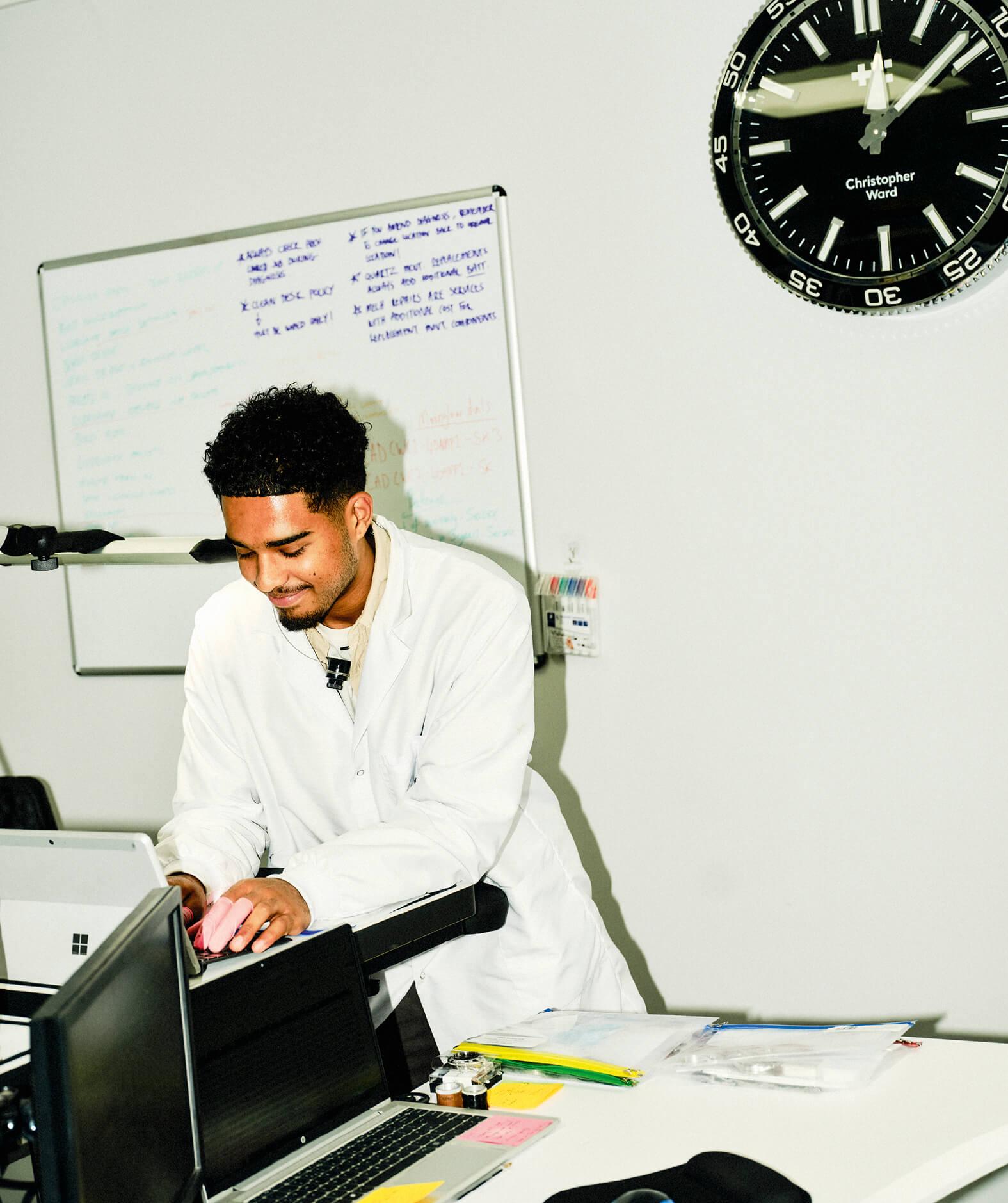
A TECHNICIAN GETS TO WORK
Then, in 2018, Christopher Ward, the man who gave his name to the brand, left the business to set up Tribus, a new watch company, with his sons. Despite its Anglo-Swiss production model and a direct, online sales approach (eagle-eyed business students may spot similarities with another brand) and a high-profile deal as Liverpool FC’s official wristwatch partner, things never really went Tribus’s way. Liverpool briefly but spectacularly became persona non grata when they attempted to join the ill-fated, reviled Super League. Tribus dropped out of the deal, then Covid hit — by 2022 the company had dissolved. This is one of the few subjects Bader talks about with some reservation. “Chris, Mike and Peter had their own issues — let’s keep it that way,” he says. “It’s a sad story by the way — I always liked Chris very much.” By Bader’s reckoning, Tribus had an unfocused offering, a range that was far too wide and social media that was too edgy for its purpose. “Bless Chris. I’ve never seen him again, but if I do I’d have no problem at all.”
Most recently, the model that triumphantly launched Christopher Ward into its new era nearly sounded its death knell. “We fucked up with the Bel Canto pre-order,” says Bader. “We underestimated the complexity of building so many watches at this level. We then also had a supplier who completely fucked us over, who didn’t deliver at all. Then we had to cancel all orders.”
CHRISTOPHER WARD’S RANGE TICKS ALL THE BOXES
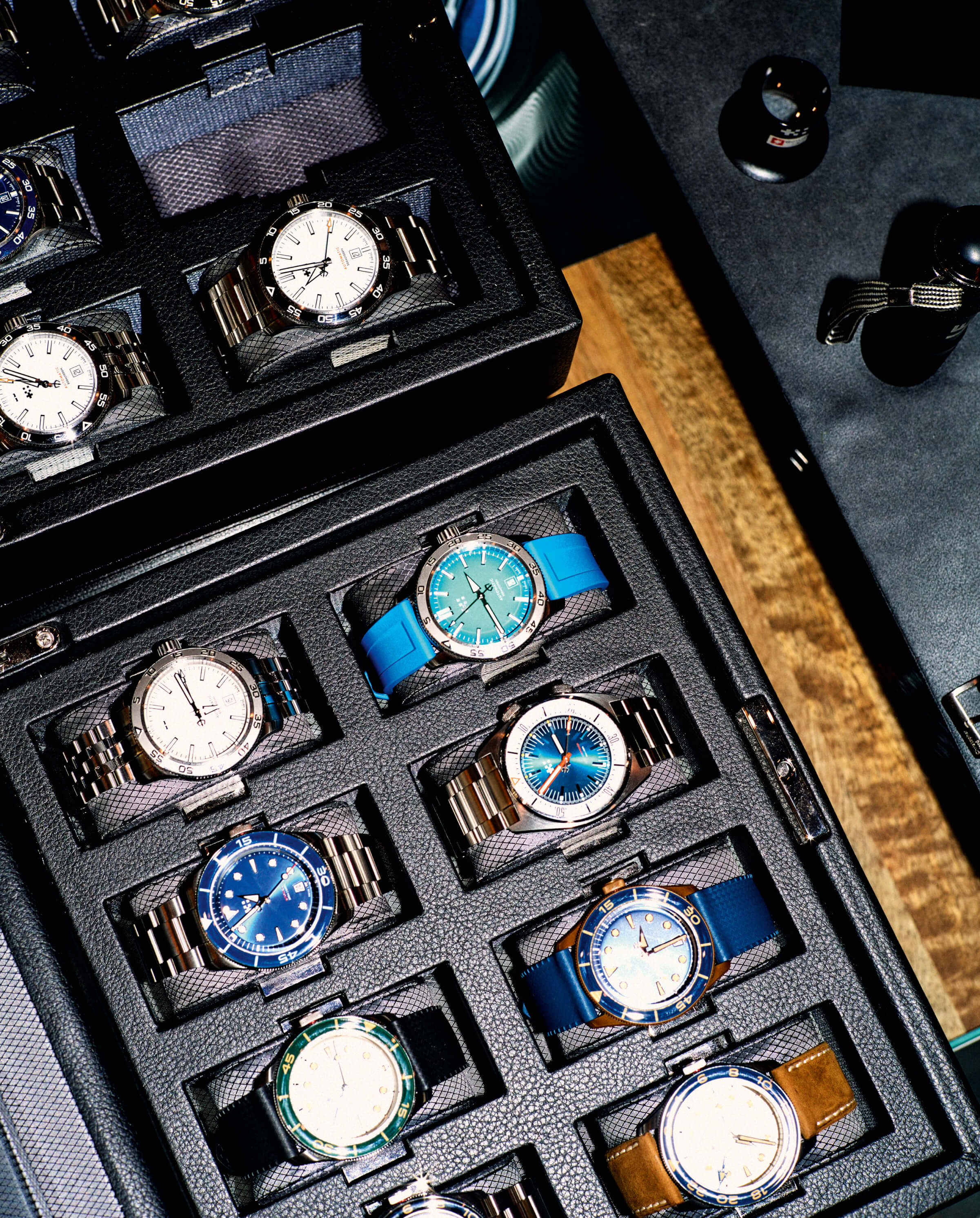
CHRISTOPHER WARD’S RANGE TICKS ALL THE BOXES
There was negative feedback online and many late nights at the office. “It was tough,” says Bader. But the teams pulled together, a new supplier was secured and, ultimately, the orders were honoured. “And today, we have reached a point where we deliver about 750 Bel Cantos each month, which is, for me, incredible,” says Bader. “Because when you think about it, how many brands do this quality, this level of watch — hand polish, componentry, 3D design — at this volume?”
Barring some sort of unforced error — a sudden radical increase in price or a drop in quality, or the decision to open a bricks-and-mortar store in Mongolia — the future of Christopher Ward seems as bright as the hands, indices, dials and applied logo on their Trident Lumière, which debuted at Salon Privé to a rapturous reception (deep in the bowels of the Watch Internet, there’s a category of luminous-watch aficionados who identify as “#lumepigs” or “lume freaks” — Esquire humbly suggests “lumatics” as an addition to this vernacular). Christopher Ward’s most recent set of company accounts showed sales of £22.9m, an increase of 124 percent. Sales were up 92 percent in the UK and 144 percent in the US. In September, it was announced that the company’s profits had skyrocketed from £222,000 to £3.9m over the space of a year.
There are more showrooms coming, too: one in Texas, the home state of roving US brand director Mike Pearson, and one that overlooks the pitch at Everton’s new stadium — a suite that will double as a hospitality box on match days.
THE TWELVE IS THE BRAND’S INTEGRATED BRACELET SPORTS WATCH
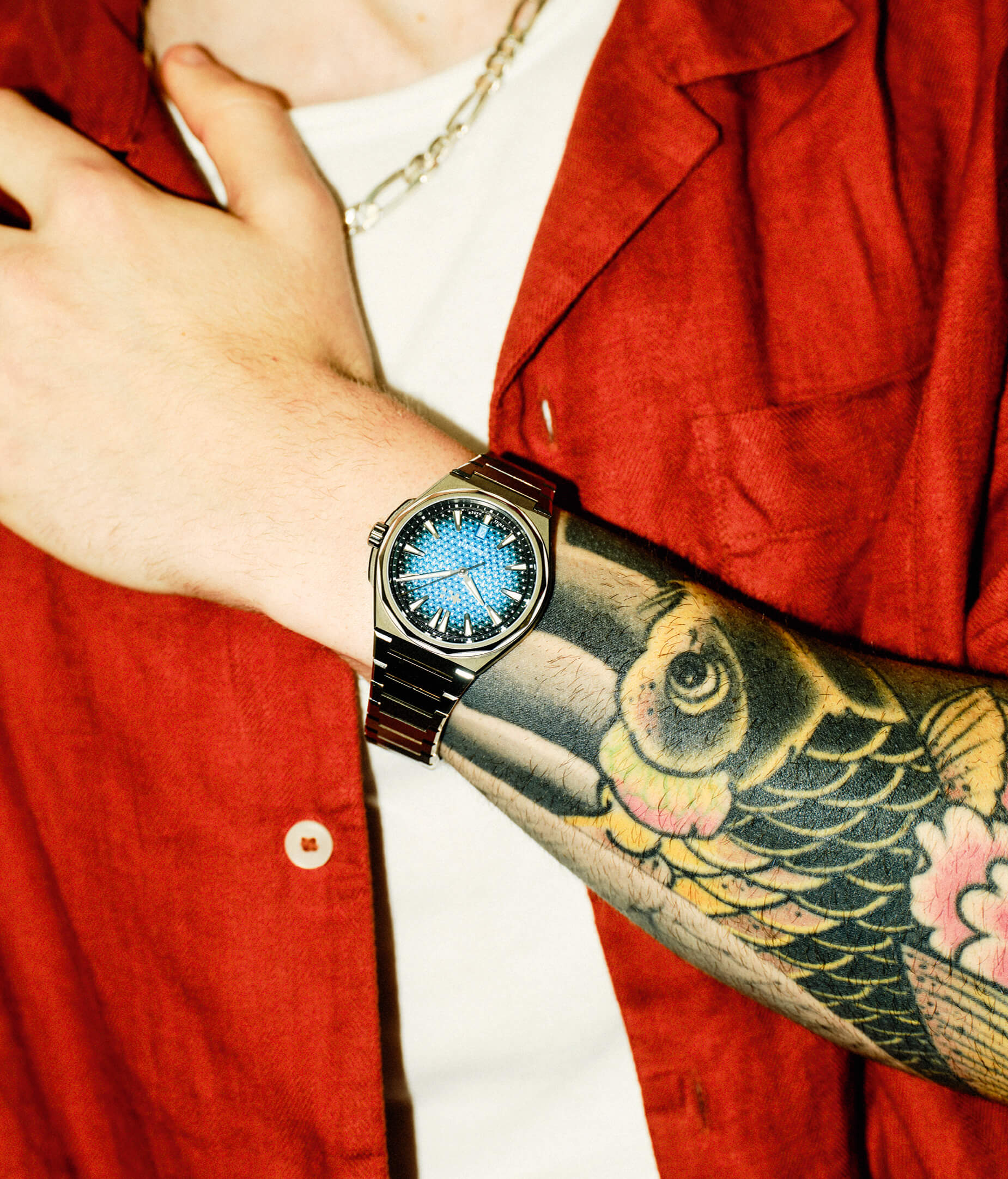
THE TWELVE IS THE BRAND’S INTEGRATED BRACELET SPORTS WATCH
Paoluzzo, with Christopher Ward and its many other concerns, is going from strength to strength, and seems set to continue its path of growth (Staub, inevitably, is installing another bar downstairs).
In Switzerland, Bader and co might well be on the verge of outgrowing their homely Biel atelier, while in the UK, the team has finally outgrown the slightly ramshackle former solicitors’ office. They’re moving into a brushed-steel, WeWork-y and collaborative sort of place. They’ll still be in Maidenhead, though, and they’re determined to keep the scrappy, collegiate spirit alive — Mike France has insisted on having a “creativity hub” in the centre of the office.
The company is growing, but it hasn’t lost who it is. Heather Fuller will still be affably handling the returns, regardless of what kind of container they come in. And — for now, at least — France will still be turning up to the office, barrelling ahead enthusiastically with the next big idea. To be clear, it’s not that he has shown signs of wanting to move on — it’s just that, such is his vivacity, it’s rather difficult to imagine him not eventually getting restless and heading off into the sunset in search of a triumphant third (fourth?) act.
“Even if we shoot for the stars, we need to stay accessible. The essence of it all is to be the people’s premium watch brand”
Whatever the next 20 years have in store, it feels as if Christopher Ward is settling into its groove — maturing, learning from its missteps, setting itself up for the future. The company recently acquired a 20 percent share of Paoluzzo — indicative of a long-term commitment to improve supply-chain efficiency (“We still have the potential of 20 to 30 percent to optimise,” enthuses Staub).
A WATCHMAKER CAREFULLY INSPECTS THE CASE OF A BEL CANTO
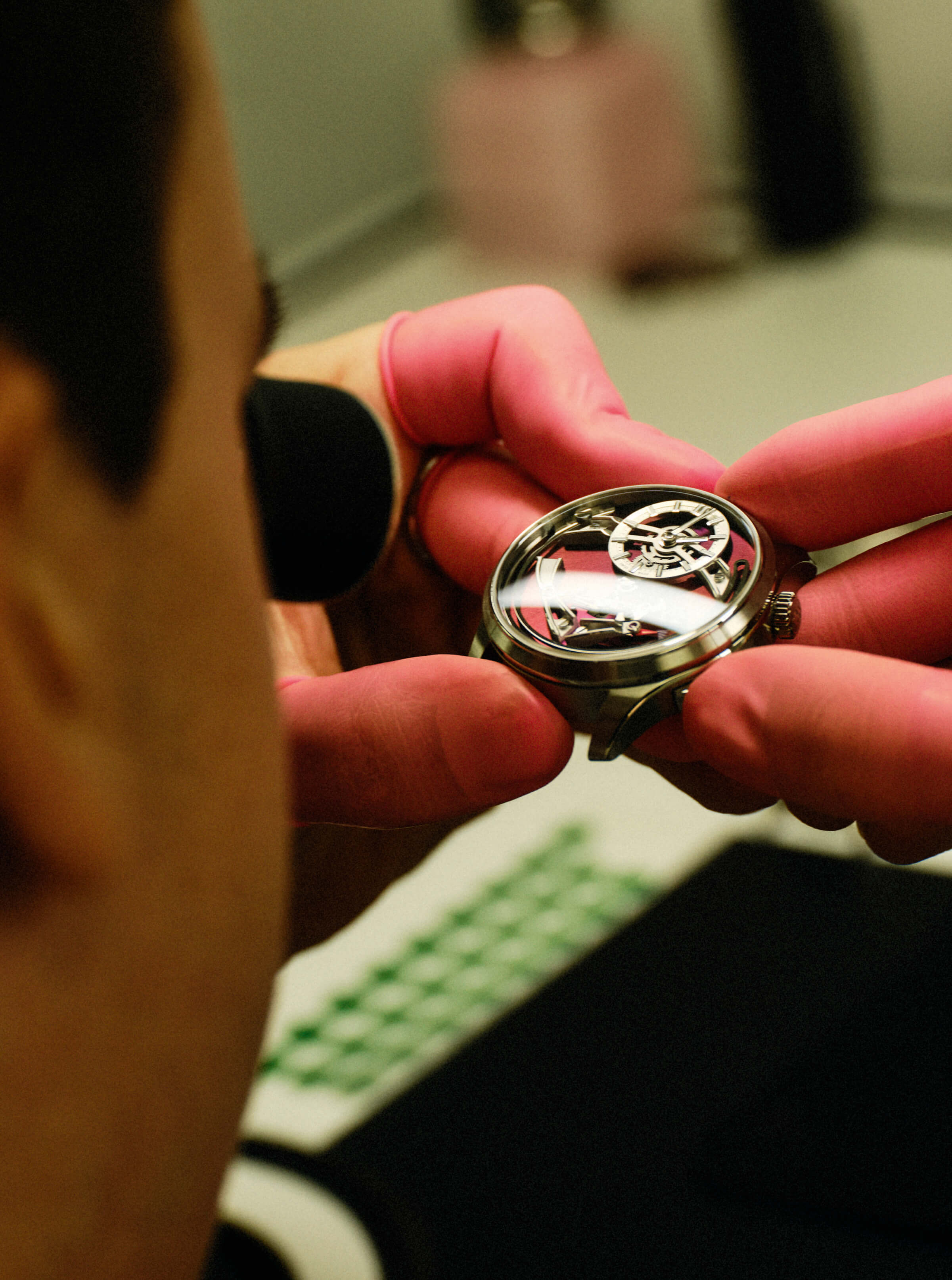
A WATCHMAKER CAREFULLY INSPECTS THE CASE OF A BEL CANTO
“We’re not doing this for a quick flip,” says France. “We are aiming to create a great business — that’s always been my dream.” France cites the influential Stanford teacher Jim Collins, author of Good To Great, who defines a great business as one that has stood the test of at least two generations and averaged returns that are 6.9 times greater than the market’s. “We nearly got there with Early Learning Centre, but we didn’t quite,” says France. “It was a very, very good business, but it wasn’t great by these criteria. So this is the opportunity that Pete and I have to create something great. That’s what we’re after, and it will only be great if it survives us. So that’s really the aim.”
And over in Biel, Bader has a simpler but no less focused philosophy guiding him as the company prepares to launch ever more ambitious lines. “I always say, we could make the most exceptional product, [but it] doesn’t fucking matter — people need to be able to afford it. Even if we shoot for the stars, we need to stay accessible.” He sums it up even more succinctly: “The essence of it all is to be the people’s premium watch brand.” ○